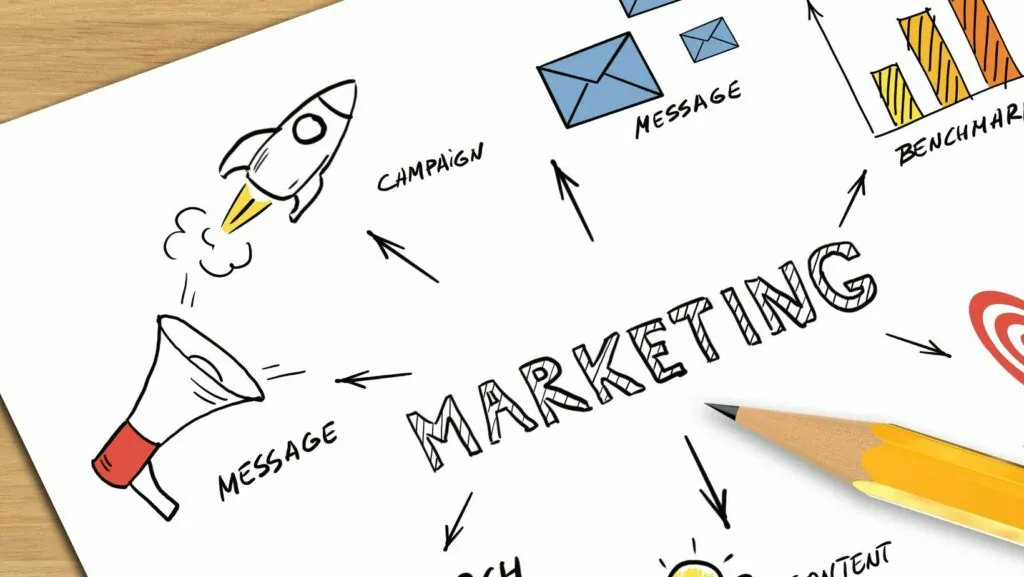Table of Contents
ToggleMarketing can feel like a full-time job—especially for small business owners juggling everything from sales to operations. But AI is changing the game. What used to take hours (or entire teams) can now be done in minutes with the right tools. From copywriting to customer insights, today’s AI-powered platforms offer powerful boosts to marketing efficiency, creativity, and performance.
Here are some AI tools you can start using right now—and one FAQ to guide your design efforts in a critical area: infographics.
1. Jasper: Fast, On-Brand Copywriting at Scale
Jasper is an AI writing assistant designed to help businesses generate copy for ads, websites, blogs, and more. What sets Jasper apart is its ability to understand brand voice. You can feed it previous content or guidelines, and it will learn your tone. This means less editing and more consistency across channels. Jasper also supports several languages, making it ideal for businesses with international audiences. A bonus feature: campaign workflows that help you brainstorm, write, and repurpose content in a single session.
2. Pictory: Turn Long-Form Video into Short, Shareable Clips
Pictory uses AI to automatically trim long videos into short, social-ready clips. Upload a webinar, product demo, or testimonial, and the tool will find key moments, overlay captions, and even add branding. This is a powerful way to extend the reach of your content across platforms like Instagram Reels, YouTube Shorts, or LinkedIn. It also offers script-to-video tools, so you can turn blog posts or sales copy into quick explainer videos without filming anything. If your content creation feels stuck in slow motion, Pictory speeds things up—smartly.
3. Surfer SEO: AI-Optimized Content Planning for Search
Surfer SEO isn’t just a keyword tool—it’s a full AI-powered content planner. It analyzes the top-performing content for any topic and helps you build outlines that match what search engines are prioritizing. For small businesses trying to grow organic traffic, this means creating smarter content, not just more content. Surfer’s built-in content editor even scores your draft as you write, ensuring you hit all the right structural and topical notes. Pair it with your writing tool for maximum impact.
4. Tidio: Conversational AI That Doesn’t Sound Robotic
Tidio is an AI-powered live chat and chatbot platform built for small businesses. It helps you automate customer support, qualify leads, and even recommend products in real time. What makes Tidio unique is its ability to blend automation with human-like conversation, thanks to its Lyro AI engine. It integrates with platforms like Shopify, WordPress, and Wix, and even offers multi-language support. For resource-limited teams, Tidio gives the impression of always being available—without the payroll overhead.

5. Predis.ai: Smart Social Content with Visuals and Captions
Predis.ai takes a single prompt or idea and transforms it into a full social media post—complete with visuals, hashtags, and captions. It’s especially valuable for brands that struggle with design or creative ideation. Just input a topic or goal, and Predis handles the rest. You can also analyze competitor content and tweak your posts for better performance. If social media consistency is your weak spot, Predis helps you show up more often—and with better content.
6. AdCreative.ai: Generate High-Converting Ads in Minutes
AdCreative.ai uses machine learning to build ad visuals and copy that are optimized for conversion. Whether you’re running Google Ads, Facebook campaigns, or display promotions, the platform rapidly produces ready-to-launch creative options. You can A/B test ad sets and get AI-scored performance predictions before you even launch. For businesses with limited design resources but big campaign goals, this is a fast and data-backed way to build better ads without hiring a team.
📊 FAQ: Choosing the Best AI Tools for Infographic Design
Infographics are still one of the most effective ways to simplify complex data and boost visual engagement across blogs, social posts, and presentations. But not all design tools are built the same—especially when AI enters the mix. Here are five updated questions marketers often ask when choosing infographic design platforms.
Q1: What are the easiest tools for creating infographics without needing a graphic design background?
Adobe Express offers one of the most streamlined options. Their infographic maker lets you start from a wide selection of modern templates, then customize text, colors, and graphics with drag-and-drop ease. It’s perfect for beginners and marketing teams that want to produce professional visuals without deep design experience.
Q2: Which platforms offer ranked comparisons of infographic design tools?
Review sites like G2 and Capterra regularly publish comparisons and rankings based on user feedback and features. These resources are helpful when evaluating tools side-by-side for things like AI capabilities, pricing, and template variety. They also offer filters specific to small business needs, which can narrow your search.
Q3: I’m overwhelmed by choices. What’s a user-friendly infographic builder that balances simplicity and power?
Visme and Piktochart are strong contenders here. Both platforms offer intuitive interfaces, template libraries, and real-time editing tools. They also allow for easy exports across formats—ideal for teams juggling multiple channels. Their onboarding tutorials also help you get started fast.
Q4: What tools include a wide variety of infographic templates across industries?
Look for tools that categorize templates by use case—like education, sales, health, or real estate. Venngage and Adobe Express both offer curated template categories that align with industry needs. This speeds up the creation process and helps your content stay relevant and on-brand.
Q5: Are there infographic tools that use AI to help with design or content layout?
Yes. Piktochart, Visme, and Predis.ai have introduced AI-powered features that recommend layout changes, color palettes, and even content flow based on your topic. These smart suggestions reduce design guesswork and help you create infographics that are more readable and visually balanced.
You don’t need a massive budget—or even a full-time marketing team—to produce sharp, consistent, and effective content. The right AI tools not only save time but amplify your reach, polish your brand, and give you insights faster than traditional workflows. Start small, test often, and let AI lighten the load while you focus on what you do best: growing your business.







